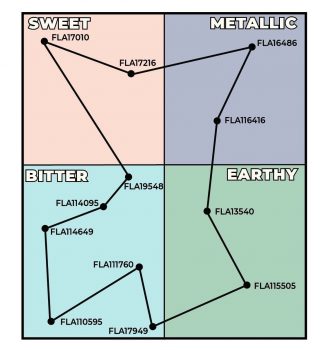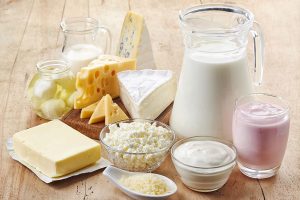Flavor maskers and modulators are part of our daily lives, and becoming more prominent in the commercial production of foods, beverages and sports nutrition powders. Every morning, we’re most likely using flavor maskers and flavor modulators. Do you take your coffee with cream or sugar? Both are flavor maskers tasked with reducing the natural bitterness of coffee. What about salting your scrambled eggs? Salt is a flavor modulator because it enhances umami and sweet flavors.
Consumers are demanding more from their products: more protein, more vitamins and more functional ingredients. That’s great, but it also poses significant formulation challenges. Let’s say you’re making a protein bar with plant proteins. You nailed the protein quantity and quality using a custom blend of pea and brown rice protein, but your sensory panel fails. Red flags are everywhere in the form of earthy and bitter aftertastes. Adding sugar won’t fix it, nor will more chocolate or vanilla flavoring.
This is where flavor masking and modulation comes in. It’s an ingredient discipline that’s just as important as adding a characterizing flavor, such as cherry or vanilla. In fact, flavor maskers and modulators are built from the same building blocks as any other flavor, but they are not engineered to leave a signature of their own. They’re supporting actors, not the lead.
Impacting Flavor in a Formula
There are three ways you can impact the flavor of a formula beyond its base ingredients:
- Characterizing Flavors: Creating a strawberry whey protein drink? Strawberry is your characterizing flavor. It’s essentially what you want your product to taste like. Osage Flavors supplies a complete line of them.
- Flavor Modulators: These compounds provide a subtle boost to your five basic tastes. Want something that’s a bit sweeter or delivers more umami? Use a flavor modulator.
- Flavor Maskers: These ingredients specifically target and suppress unwanted flavors and ensure a product tastes cleaner with a more defined characteristic flavor.
Osage Flavors has vast experience imparting, modulating and masking flavors in a wide variety of formulas. We’re seeing the most action in high protein products that use plant proteins such as pea, brown rice, almond or soy. These ingredients deliver protein, but also a potent cocktail of bitter, earthy and metallic notes that are difficult to mask.
These off‑notes become even more pronounced as protein content pushes toward the 15 to 30 grams per serving consumers now crave. Flavor maskers neutralize unwanted flavors without adding extra calories or ingredients that you can’t pronounce. These masking and modulator systems protect both taste and label integrity, turning a functional high-protein product into a craveworthy snack or drink.
Developing a Custom System
Unfortunately, flavor maskers and modulators are not “off-the-shelf” ingredients that you buy and simply add to a formula. Using these types of systems requires experience and often a custom system specific to an application. Osage Flavors supplies a complete line of masking agents and modulators in liquid and powder forms. We classify them by the following categories:
- Bitter: Neutralizes off notes from ingredients such as caffeine, amino acids, botanical extracts and natural sweeteners.
- Earthy: Conceals off notes that naturally occur in plant proteins and botanical extracts.
- Metallic: Blocks unwanted notes coming from vitamin and mineral fortification, as well as natural sweeteners such as stevia and monk fruit.
- Sweet: Creates a clean, sweet flavor profile similar to real sugar.
As product formulations demand more protein, more functional ingredients and more flavor, contact Osage Flavors to ensure you successfully overcome any formulation challenges.





